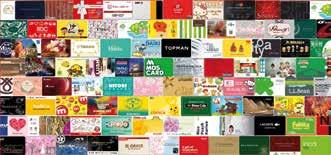MRCA Event
22
MRCA Youth Virtual Talk: Santan Restaurants – Switching the Game Catherine Goh, General Manager of Santan Restaurants shares valuable insights on her experience in the F&B industry in Asia. n 9 February 2021, MRCA Youth held a virtual talk that featured Catherine Goh, who shared about AirAsia’s foray into the F&B market as a franchise operator through the brand Santan Restaurants. In explaining the inspiration behind the name, Catherine says that “Santan” was chosen to represent the brand as it is the main ingredient in nasi lemak, the key enhancer of flavour in this staple Malaysian dish. Santan Restaurants as a business was inspired by Tan Sri Tony Fernandes who took steps to expand and pivot AirAsia’s ecosystem beyond just flights. “It all started back in 2015. Previously, our flight brand was called AirAsia Café, and we served cold snacks that we bought off the shelves,” Catherine explains. However, in 2015, AirAsia decided to rebrand and Santan Restaurants was born. “The first year of our rebranding was a huge success. We achieved the highest historical revenue per pack in that year because of a huge rewriting exercise, and standisations across the Group,” she shares. In 2018, Santan served more than 600 million passengers, and in 2019, customers began demand for takeaway. In December of that year, AirAsia opened its first flagship outlet in MidValley Megamall in Kuala Lumpur. Subsequently, a second outlet was opened in Sunway Pyramid Shopping Centre.
O
Malaysia Retailer Vol 9 No 1
In September 2019, Santan received its franchise license, after which they opened their first franchise restaurant in KL Sogo. In a span of three months, seven franchise restaurants were opened in the Klang Valley. For 2021, there are plans to open 50 outlets in Malaysia, China, the UK and Thailand. Business was affected due to the COVID-19 pandemic, however, AirAsia’s mobile application was instrumental in addressing this challenge. Catherine stresses that AirAsia has always been about people and through this business model, the company was able to give young entrepreneurs the chance to own a business. “For us, it’s not just about selling the franchise, we want to make sure we give people a chance to grow, and to teach and equip them with business skills,” she says.
Catherine explains that many of the franchisees are young entrepreneurs, and AirAsia has helped them grow through this journey in entrepreneurship. “We are not in this business just for profits, we are in the business to grow the country’s economy together, and that’s our mandate,” she explains. As a young leader in the F&B business, Catherine believes that it is important for her to be hands-on and to get her hands ‘dirty’ as she needs to understand the business inside out. Catherine reminisces that she faced a lot of skepticism when she first started driving the business as this has never been done before in the aviation industry. “It’s the innovative blood that we have in AirAsia – we just have to do it and make it happen,” she quips. In sharing key business success factors, Catherine explains that AirAsia has the advantage of a big database of customers to upsell, and at a very low cost as well. Santan’s marketing strategy was also innovative, and the whole business concept of an airline going into the F&B franchise business model was also a sensational approach. At the same time, Santan ensured that customers receive superior quality of food at a low cost. In ensuring continuous supply of raw materials, AirAsia has multiple suppliers, while several kitchens are in place to ensure steady and uninterrupted operations.












